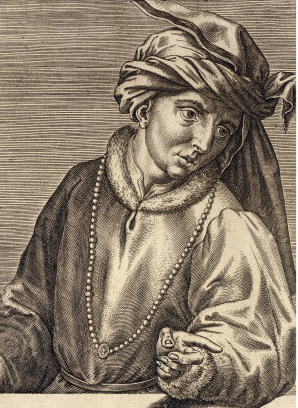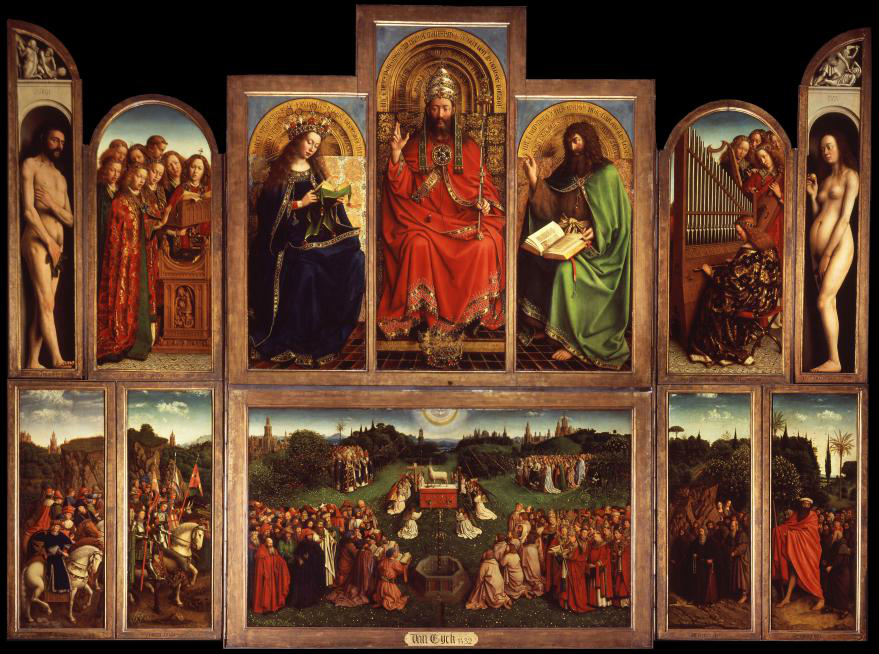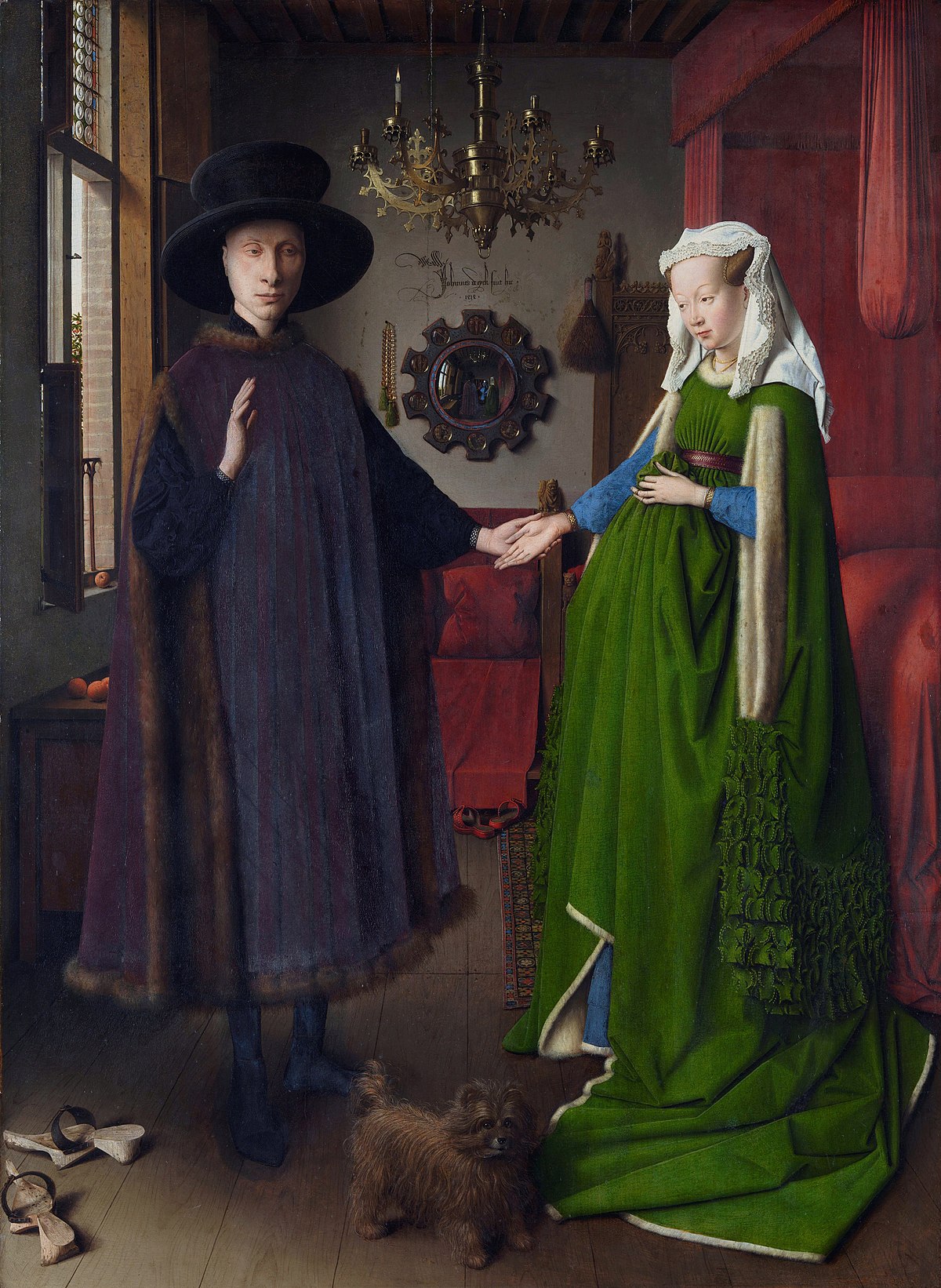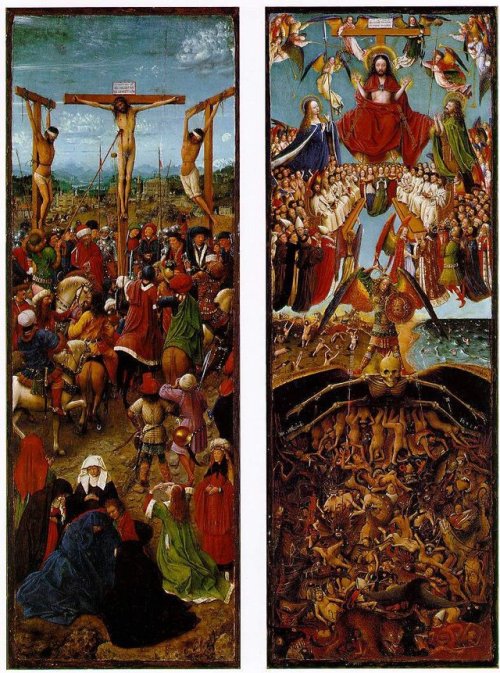Biography
Jan van Eyck (ca. 1390-1441) is a Dutch painter, the greatest artist of his time and early Renaissance. Van Eyck perfected the technique of writing oil paints and became, thus, the ancestor of the Golden Age of Dutch painting.
Dutch artist Jan van Eyck was very famous in his time. “The most important artist of our century” – so named Jan van Eyck his younger contemporary, Italian humanist Bartolomeo Fazio. He was born between 1390-1400 in Maaseik. Unfortunately, little is known about the infant and youthful life of the artist.
From 1425 to 1429 years he worked for the Duke Philip the Good in Lille. He carried out various artwork, and even some diplomatic assignments (such as mediation in marriage, for example). And also, Jan van Eyck was the godfather of Philip’s son. The Van Eyck was highly valued by Duke and considered him as a cultured and educated man, unparalleled in art and knowledge.
Already mentioned Bartolomeo Facio wrote in the book on the famous men of his day that Jan was fascinated with geometry, created a kind of a geographic map. The artist’s experiments in the field of oil paint technology speak of knowledge in chemistry. In addition, he was interested in botany, which is demonstrated by his paintings.
A lot of controversy arises around the artist’s paintings and his relationship with his brother. Their relationship with Hubert created an aura of austerity. His name is mentioned next to the name of Yana several times, and there is very little information. Most scientists believe that Hubert was much older and taught Jan the skill of the painter. Some of the pictures they painted together and some separately. There are a huge number of paintings, the author of which has not been identified. But also, there is a version that Hubert was not so much an artist as a decorator, and with his brother, they worked as a “family contract.” Other researchers believe that Hubert – just a namesake and a very average artist in fact. And some, in general, believe that no Hubert did not exist at all, and all this is a hoax.
Key Ideas in painting
In the book “Secret Knowledge” British artist David Hockney published an interesting idea according to which Jan van Eyck and his other contemporary artists used optical devices, such as concave mirrors, to design images on the surface of the canvas. This would allow the artist to capture the smallest details of various complex objects, such as jewelry, folds of clothing, hairs in the hair, and the fabric textures, in general, are depicted with diabolical precision. His manner of multi-layered writing allowed to achieve depth and richness of color. Saturated sparkling colors have helped the artist to emphasize the realism of what is happening and to show wealth and material abundance practically on each of his paintings.
Van Eyck perfected the technique of oil painting. With the help of oil, the artist achieved realism of the highest degree. He worked on oak boards (most often – Baltic oak), after, the canvas was covered with a dense layer of white soil, to obtain a smooth, shiny surface. Then he applied a drawing, sometimes very detailed, then did a translucent underpainting and began to apply one after another translucent layer of oil.
The main means of medieval painting on wood was the tempera –it is painted consisting of a finely milled pigment mixed with egg yolk and diluted with water. It was thick and quickly dried up, which did not allow the artist to create the main tonal transitions. Oil paint is viscous, slowly drying substance made it possible to apply a variety of methods of painting – from thin, translucent ink layers to dense, opaque layers of paint. With the help of oil paints, it was possible to obtain the innumerable shades needed to transfer the three-dimensional image, and also, for the first time in painting, thick dark shadows. Compared with the egg tempera, wax paints, and frescoes, oil paints enjoyed an advantage, because now the artist had the opportunity to change the design in the process of work. Without them, the Flemish painters could not reach such heights in the transfer of the visible world.
Famous paintings made by Jan van Eyck
The Ghent Altarpiece
One of the most famous paintings of Van Eyck is the “Ghent Altar,” which began his brother, but he died in 1426, and Ian continued and completed this work. The Ghent altar is a large two-tier, multi-part folding-series of paintings and hundreds of figures are united in it by an idea and architectonics. The greatest work of art of the XV century. It consists of 12 wooden panels and an external frame (now lost). The iconography of the altar has not yet been deciphered completely and raises many questions. In 2016, eight pieces of the altar were restored and exhibited for public viewing.
Madonna of chancellor rolin
Van Eyck created a series of paintings dedicated to the Madonna, and also was a true master of the portrait. In the altar work “The Madonna of Chancellor Rolen” the artist’s method becomes more complicated. This picture was created by the Dutch painter Jan van Eyck in 1435. Not very large (66×62 cm), it seems larger than its actual size.
The picture depicts Chancellor Nicolas Rolen (1376? -1462). He was born in Odeon in the bourgeois family, Nicholas was a famous patron of art, he always helped painters and supported their undertakings, ordered a lot of paintings, as, indeed, this one. He also took part in the creation of the system of the early Absolutist state administration of Duke Philip the Good.
The painting was before time in the church belonging to the Chancellor – Notre Dame Du Chatelet in the city of Odeune (Burgundy, France). In 1793, the church was burnt, but the picture was saved. After that, for about ten years, the painting was in the city cathedral of Otien, and then in 1805 entered the Louvre.
Portrait of Giovanni arnolfini and his wife
The Arnolfini Portrait is the first known in European painting pair portrait, written in 1434 in Bruges. According to the studies of numerous art historians, Jan van Eyck portrayed merchant Giovanni di Nicolao Arnolfini with his wife.
Others are opponents of this version because the heroes are not in the wrong hands and not on those fingers are wearing rings. Plus, a handshake is not characteristic of wedding ceremonies. And in general, the portrait was written after the death of a woman. Giovanni di Nikolao in 1426 took his 13-year-old Constanza Trent to wife. Her mother Bartholomew, in a letter dated February 26, 1433, addressed to Lorenzo de ‘Medici, reports the death of Constantza. The extinguished candle in the chandelier above the woman is treated as another proof that the painting was written after the death of the lady.
Still, others generally claim that in the picture van Eyck portrayed himself with his wife, Margaret.
Crucifixion and last judgment diptych
The picture-diptych was written by the Eyky brothers in 1420-1425. Is a two-folded folding large enough, in comparison with other works of Van Eyck, a size of 56.5 x 19.5 cm (each leaf)? There is a suggestion that, in fact, there were three canvases. The paintings began to be written two years before the Ghent altar and three more years of work were conducted in parallel.
On the vertical axis, you can see the key moments of the Last Judgment: Christ is the judge at the top, and the Archangel Michael, who controls the underworld.
Next, to Jesus, you can see the Virgin Mary and John the Baptist, who seem to float above people who have entered paradise.
Some parts of the painting contain inscriptions in Greek, Latin, and Hebrew.









